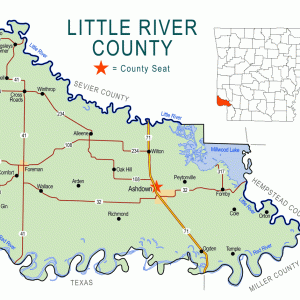calsfoundation@cals.org
Wilton (Little River County)
| Latitude and Longitude: | 33°44’28″N 094°08’54″W |
| Elevation: | 318 feet |
| Area: | 1.28 square miles (2020 Census) |
| Population: | 287 (2020 Census) |
| Incorporation Date: | February 8, 1894 |
Historical Population as per the U.S. Census:
|
1810 |
1820 |
1830 |
1840 |
1850 |
1860 |
1870 |
1880 |
1890 |
1900 |
|
– |
– |
– |
– |
– |
– |
– |
– |
– |
– |
|
1910 |
1920 |
1930 |
1940 |
1950 |
1960 |
1970 |
1980 |
1990 |
2000 |
|
294 |
285 |
313 |
319 |
328 |
329 |
427 |
495 |
449 |
439 |
|
2010 |
2020 |
|
|
|
|
|
|
|
|
|
374 |
287 |
|
|
|
|
|
|
|
|
Like many of the cities of southwestern Arkansas, Wilton was created alongside railroad development. Although the city was at one time a candidate for the county seat of Little River County, Wilton’s current condition is exemplified by its four properties on the National Register of Historic Places: a strip of highway, an abandoned store, a railroad depot, and a cemetery.
Allen Scott was the first owner of the land where Wilton would be established, but Scott sold his land to Paschal S. Kinsworthy prior to the arrival of the railroad. Sergent Smith Prentiss Mills, a Sevier County farmer, was also investing in Little River County land. Mills owned a hotel, a store, and a newspaper in Richmond (Little River County) and served as county sheriff from 1886 until 1892. When the citizens of Richmond denied permission to the Texarkana and Northern Railroad to build through their city, Mills was able to sell the railroad right-of-way through his property, bringing the railroad to Kinsworthy’s land. The settlement that grew up at that location was called Millkin in honor of the two men.
The railroad was completed to Millkin in 1891, and the community grew quickly. Newton Cooper ran a general store and sold crossties to the railroad. The city had three lawyers, two doctors, and a drugstore. A Baptist church was organized in 1891, and a Methodist church was created the following year. Citizens started a movement to relocate the county seat to Millkin, boasting of their central location, the high land (which was considered healthier), the railroad, and the donation of land by Mills suitable for building a courthouse and a jail. Instead, voters moved the county seat from Richmond to Ashdown (Little River County), which was also located near the railroad. In 1892, railroad officials changed the name of the depot to Wilton because one of the principal stockholders in the railroad was from Wilton, England. The railroad, meanwhile, became part of Arthur Stilwell’s network, which became the Kansas City Southern in 1900. Wilton was officially incorporated in 1894.
By 1900, the city had four blacksmiths, three livery stables, and several stores, as well as schools for white and African-American children. Mills built a new store in downtown Wilton in 1902. A bank was established before 1922. The construction of U.S. Highway 71 brought automobile traffic passing between Texarkana (Miller County) and Fort Smith (Sebastian County) through Wilton. A celebration marking the opening of the highway bridge near Wilton brought state officials to the city; the celebration featured music, a barbecue, and motor boat races on the river. In the 1930s, the city had several homes, stores, and service stations. The Wilton School District was consolidated into the Ashdown School District in 1941. Six businesses in the city remained open in 1950, although all of them had closed by 1975. The Baptist church, which had closed early in the twentieth century, was restarted in 1964.
As of 2013, the city of Wilton has two Baptist churches, a convenience store, a post office, and a volunteer fire department. Little River Hardwoods is the largest employer in the city. Children are bused to school in Ashdown. The old school building continues to be used as a community center.
For additional information:
Beasley, Bill. Little River County. Ashdown, AR: Little River County Historical Society, 1975.
Biographical and Historical Memoirs of Southern Arkansas. Chicago: Goodspeed Publishing Co., 1890.
Steven Teske
Butler Center for Arkansas Studies
 Little River County Map
Little River County Map  Old U.S. Highway 71—Wilton
Old U.S. Highway 71—Wilton 




Comments
No comments on this entry yet.